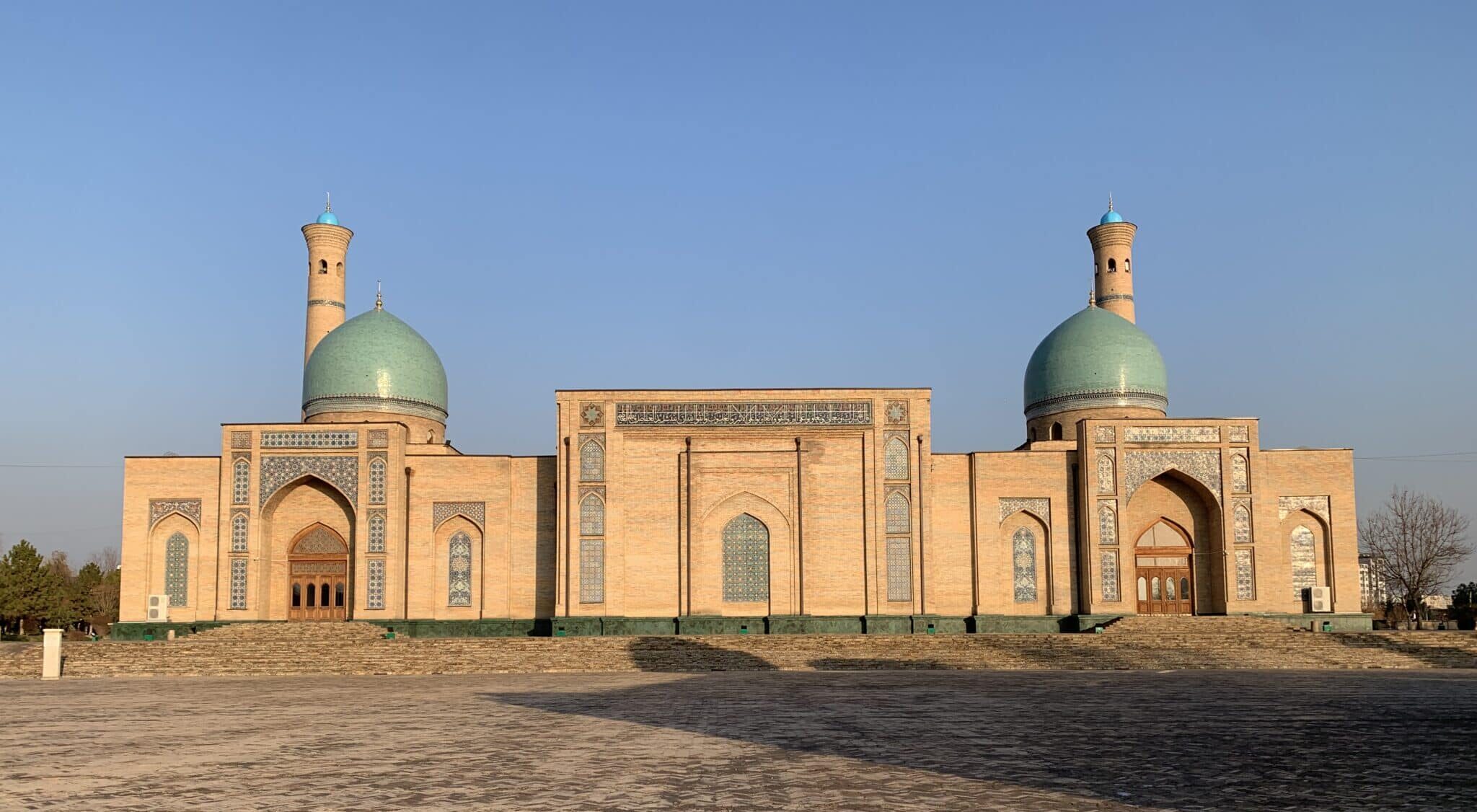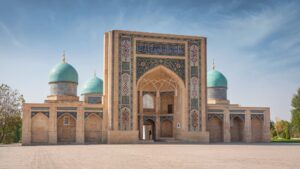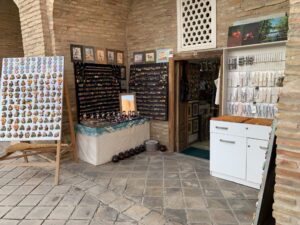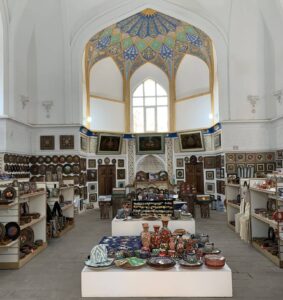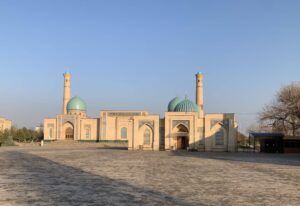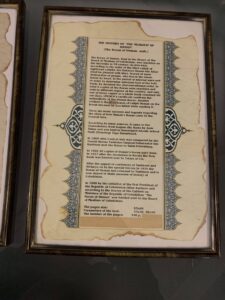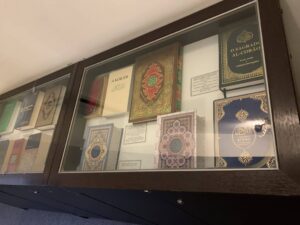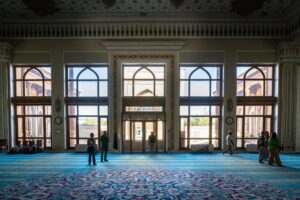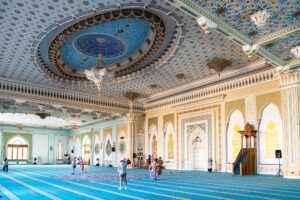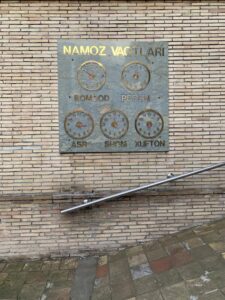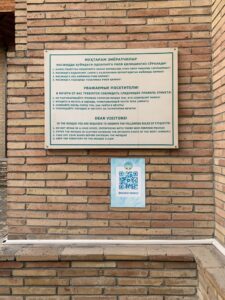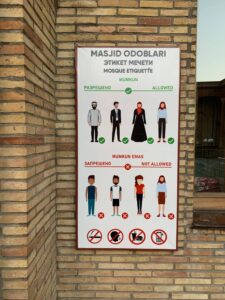Hazrati Imam Jome Mosque is a modern addition to the Hazrati Imam Complex, which features structures built from the 15th century onwards. Located in the oldest part of Tashkent, the mosque celebrates Uzbekistan’s Islamic heritage and is itself the main center of worship in the Uzbek capital. Welcoming tourists, the mosque and the surrounding complex provide an excellent opportunity to see a working mosque from the inside and thus better understand Islam, one of the main pillars of all of Central Asia’s cultures.
Hazrati Imam Complex
The Hazrati Imam Jome Mosque was constructed in 2007 under the decree of Uzbekistan’s first president, Islam Karimov. The elaborate project was completed in just four months. Its two minarets are built in 16th-century architectural style. Each stands at 50 meters, or about the height of a 15-story building. Meanwhile, the mosque patio contains 20 sandalwood columns carved in the Kokand, Samarkand, and Bukhara styles, celebrating Uzbekistan’s regional diversity. Furthermore, the two large blue domes of the Hazrati Imam Jome Mosque are decorated with gold leaf on the interior, meant to mimic the Tilla-Kari Madrassah in Samarkand.
The Hazrati Imam Jome Mosque is part of Hazrati Imam Complex, which offers much more to see. This includes the Barakhan Madrassah, Tilla Shaykh Mosque, Muyi Muborak Madrassah, Kaffal Shashi Mausoleum, Namozgah Mosque, and the administrative building of the Muslim Board of Uzbekistan.
The building closest to the Hazrati Imam Jome Mosque is the Barakhan Madrassah. The teal-domed parts of the complex were originally a “Nameless” Mausoleum, probably belonging to a cleric whose name has not survived, and a mausoleum for Suyunidzh-khan, grandson of the great Uzbek ruler and hero Ulugh Begh. The mausoleums were later converted into a madrassah, an Islamic educational center, under the rule of Barak Khan, who ruled the Golden Horde from 1423 to 1429. The building fell into great disrepair over time, but restoration efforts in the 1950s and over the course of 2006-2007 have restored it to its former glory. Today, the madrassah stands full of workshops and small stores producing and selling ikat fabrics, jewelry, woodcarvings, and pottery.
The oldest structure in the complex is The Tomb of Kaffal Shashi. The tomb is the final resting place of Hazrati Imam or Abubakr Muhammad Kaffal Shashi, the namesake of the complex and mosque. This 10th-century imam was also a scientist, poet, craftsman, and scholar of the Koran. According to legend, he received the nickname of Kaffal (“locksmith”) after the wonderful locks he built, each of which had a key weighing three pounds. Hazrati Imam’s original tomb was converted into a mausoleum more fit for pilgrimages in the 16th century. Despite repeated repairs over the years, the mausoleum still reflects that 16th century design and inscriptions.
Just across from the Barakhan Madrassah is the Muyi Mubarak Madrassah, built in the 16th century. This former madrassah is now used as a museum mostly focused on showcasing the region’s long history of education and literacy through exhibits of historical books and especially different versions of the Koran. It is believed to contain the hair of the Prophet Muhammad. In fact, its name, Mui Mubarak means “blessed hair.” The prized exhibit is the Koran of Osman, written in the 7th century and listed as a UNESCO Heritage Artifact. Osman, a caliph of the Umayyad Dynasty, helped produce one of the first standard written versions of the Koran, which helped codify the teachings of Muhamed. It has been confirmed that this is the original Koran of Osman from the blood traces left when Muyi Mubarak was killed near it. Visitors to the museum are asked not to photograph the artifact, which is fragile from age, and many residents of Uzbekistan who visit the museum pay their respects to the Koran.
Visiting the Hazrati Imam Jome Mosque (2023)
When I visited in the winter of 2023, the area surrounding the mosque was peaceful. The air was filled with the muezzin’s call for asr prayer at 4:15 p.m. There were tour guides in the vicinity offering to tell the history of the complex. These appear to be unregulated guides and their abilities and prices will vary greatly. Some can speak Russian but few English.
On my way to enter Hazrati Imam Jome Mosque, I was nervous. I was wearing pants and did not have a headdress, and so I was worried about my attire and thought I might disturb those praying. However, the mosque was prepared to welcome tourists. There were posters describing appropriate attire and behavior. Most importantly, since it is inappropriate for women to enter without a headdress or a garment that covers all parts of the body, there were long, hooded dresses of typical national Uzbek style available for women to borrow. The most important thing when visiting a mosque is to be quiet and respectful of others praying and to take off one’s shoes before entering.
Although the prayer room is single and continuous, there is a wooden blocker separating the men’s section from the women’s. Men would follow doors to the left for prayer, and women go to the right. It is here that one can find those special dresses to borrow. The mosque was crowded during the prayer times of asr and shom during my visit. I found this somewhat surprising as these times come shortly before and after many get off work. It was interesting to see how many took the time to practice their religion. I also saw more men than women, but this was not as surprising as I knew that it is preferred for women to pray at home.
Inside the prayer room, the entire floor was covered with a prayer carpet. Usually, Muslims have their own prayer rug at home, but there is no need to bring one to the mosque. The carpet in the mosque has a special design printed on it. The design, a series of individual mihrab-shaped saffs, functions to provide individual space to each worshiper and ensure the mosque can serve the maximum number of people possible by allocating the space efficiently. Each saff print functions as an individual prayer rug.
The worshipers chant their prayers to themselves. Thus, the rooms are mostly silent, and visitors must show respect by keeping quiet so that each worshiper can focus on their own individual meditative prayer.
A tourist looking to visit a working mosque and to generally learn about Islam in Uzbekistan will not be disappointed by visiting the Hazrati Imam Jome Mosque and the surrounding complex.
You’ll Also Love
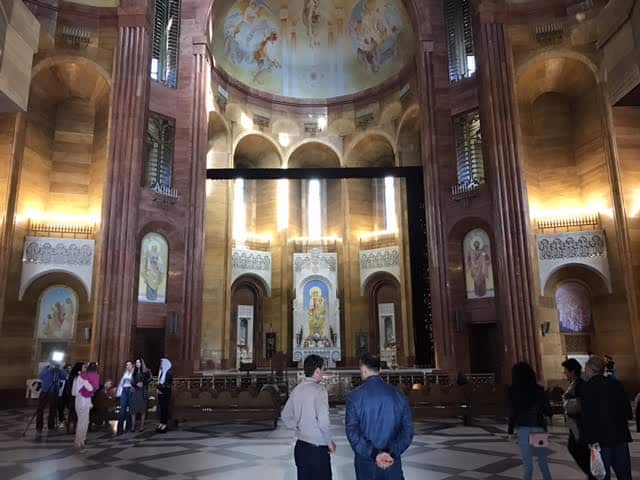
The Armenian Temple Complex in Moscow
The Armenian Temple Complex is a collection of buildings in the north side of Moscow. The large 500-meter-long square property contains an Armenian restaurant, a community center, a collection of various monuments, a museum, and the Holy Transfiguration Cathedral – the largest Armenian Apostolic Church outside of Armenia. The complex was designed to be a […]
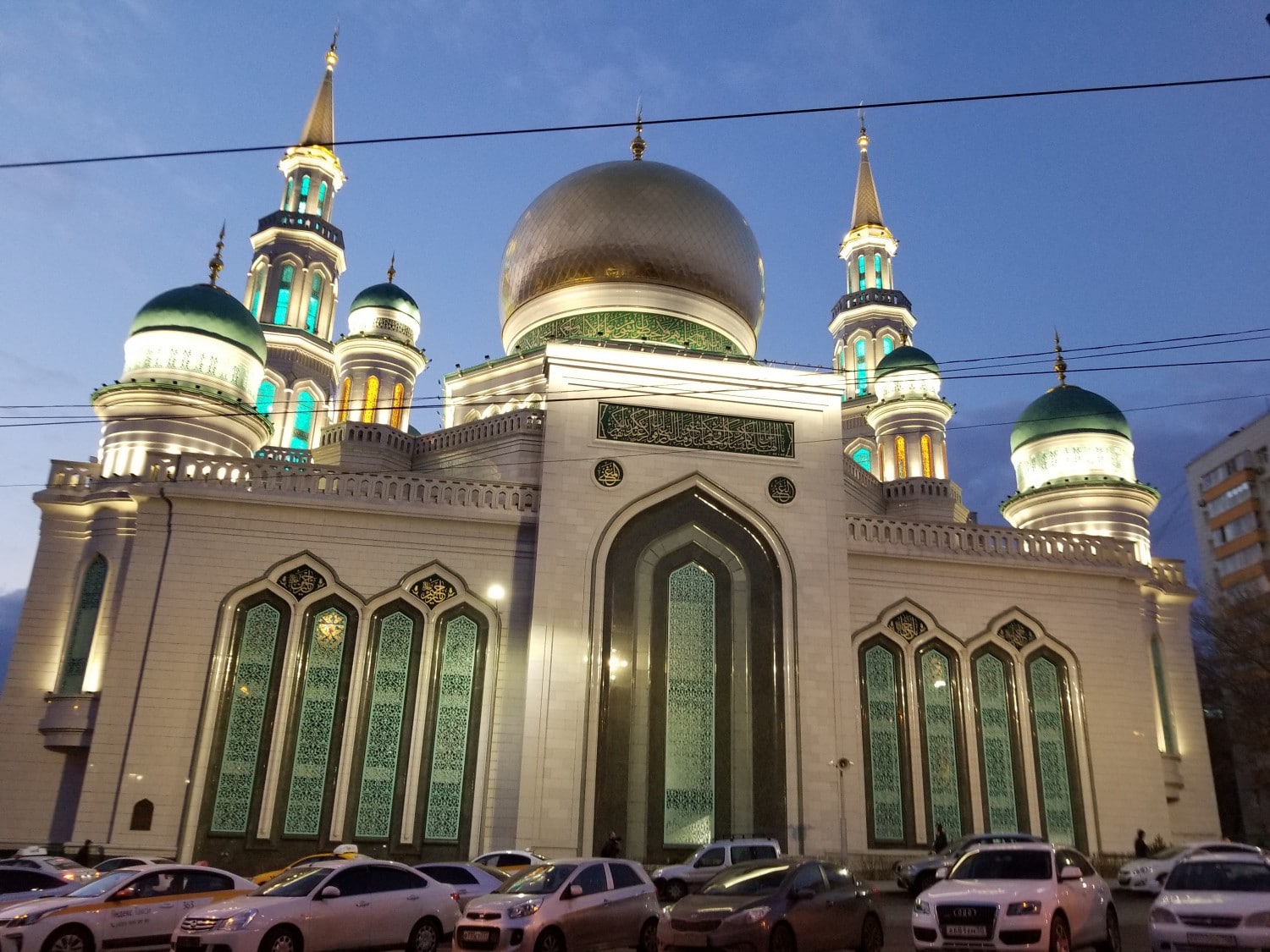
Central Asian Evening in Moscow
During our weekend trip to Moscow organized by SRAS our time was filled with tours and events. These appealed to a wide variety of interests and represented a wide variety of aspects related to modern Russian culture. One of the most interesting excursions took place over the course of an evening—beginning with a visit to […]
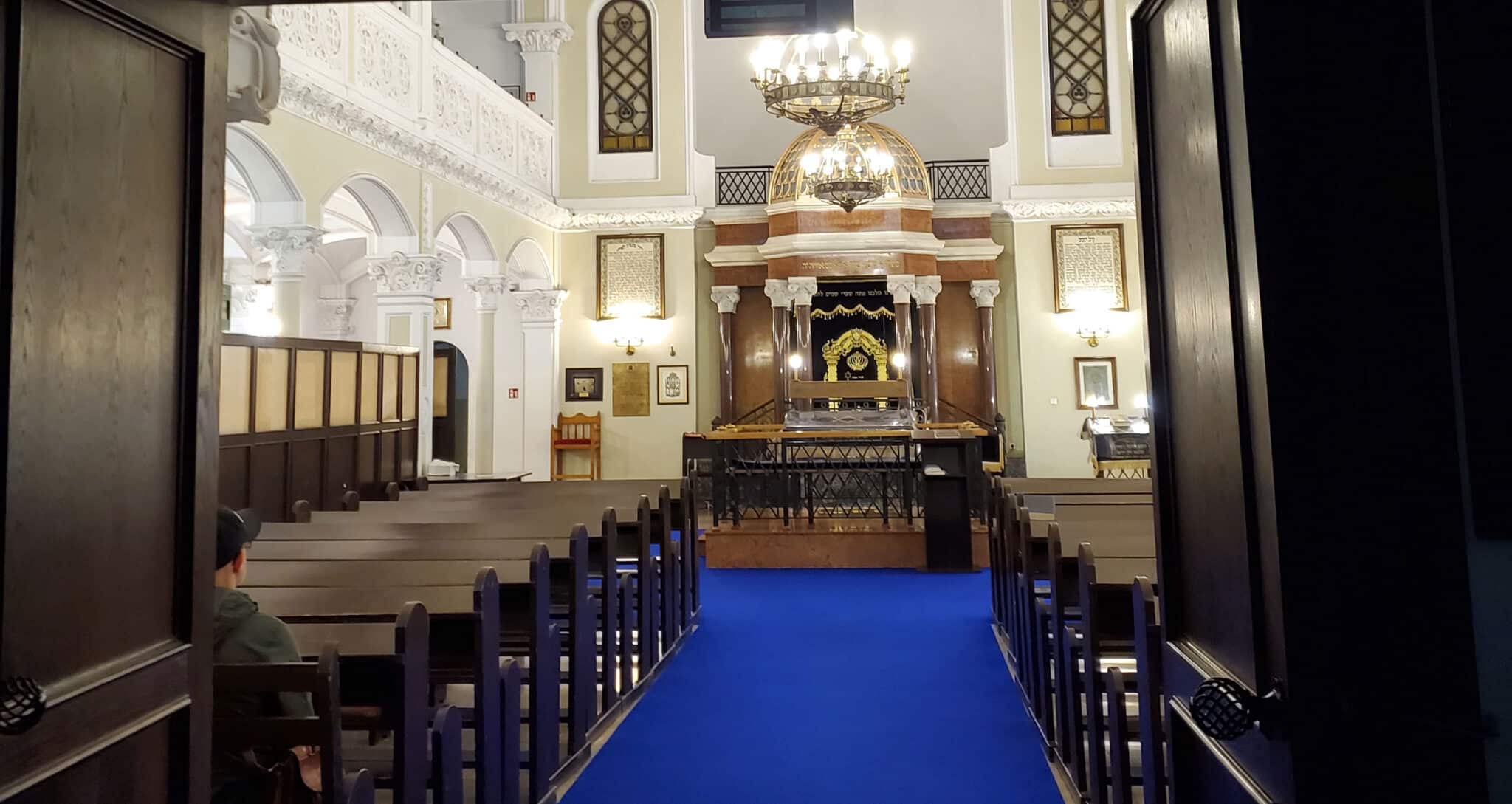
A Visit to Nożyk Synagogue in Warsaw
Tucked away on a side street in central Warsaw, the heart of the city’s old Jewish center still beats within the walls of the Nożyk Synagogue. The Nożyk Synagogue was the only synagogue in Warsaw to survive the devastation of WWII. Today, it serves as the primary place of worship for the Jewish community in […]
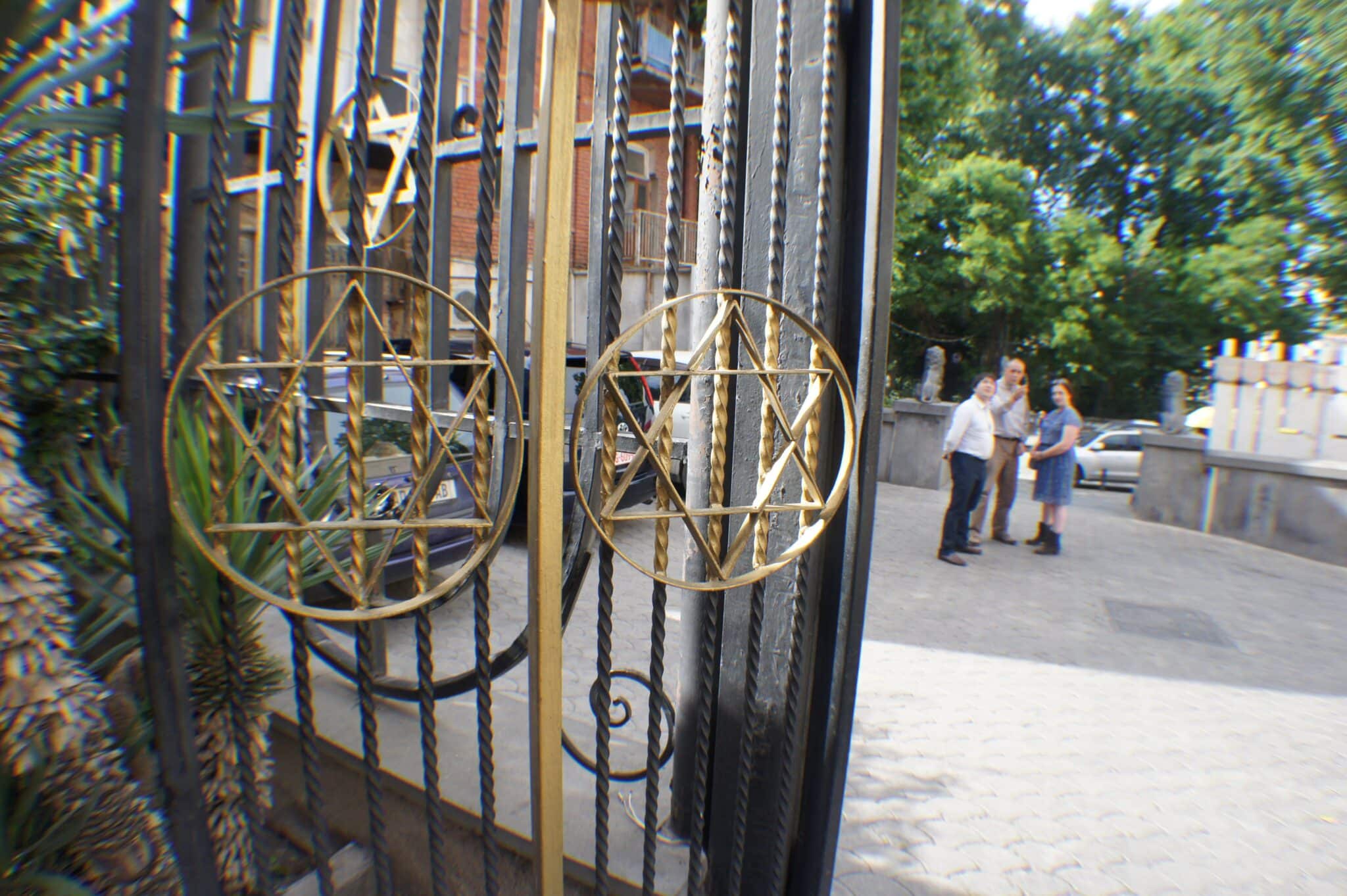
Jewish Georgia: A Brief History and Guide
This guide to travel in Georgia is tailored for Jewish-American university students preparing to study abroad in Georgia. We navigate the historical depth and modern vibrancy of Jewish life in this culturally rich country. Discover key historical sites, engage with local Jewish communities, and find practical tips on maintaining kosher practices and observing Shabbat while […]
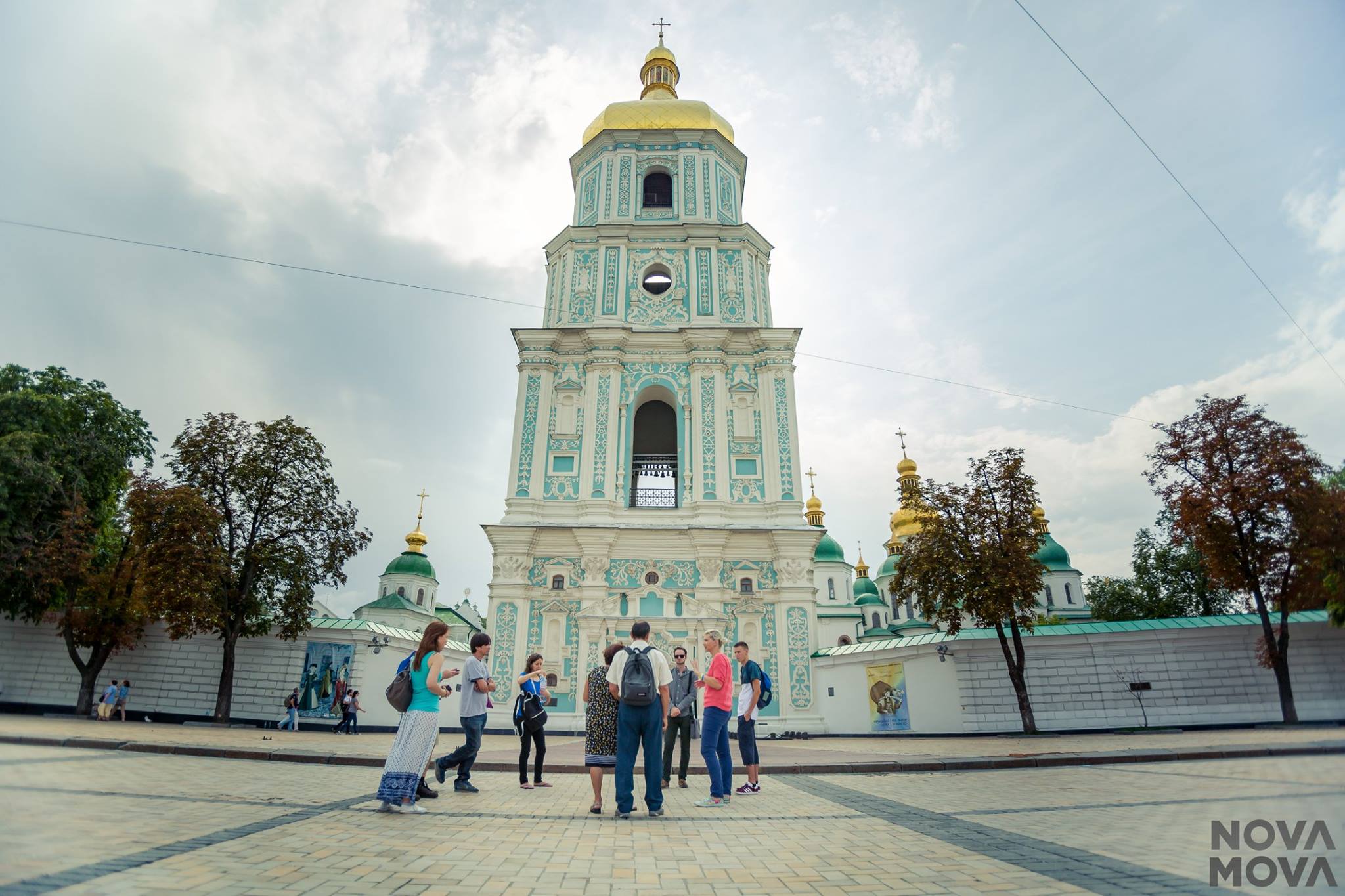
St. Sophia’s Cathedral – The Historic Protectress of Kyiv, Ukraine
Near the center of the city, St. Sophia’s Cathedral is maintained by the Ukrainian government as a grand and beautiful reminder of the past. Originally founded in 1011 A.D., when Kyiv was still the capital of Kyivan Rus’, it was an early and grand celebration of the state’s official adoption of Christianity in 988. The […]

